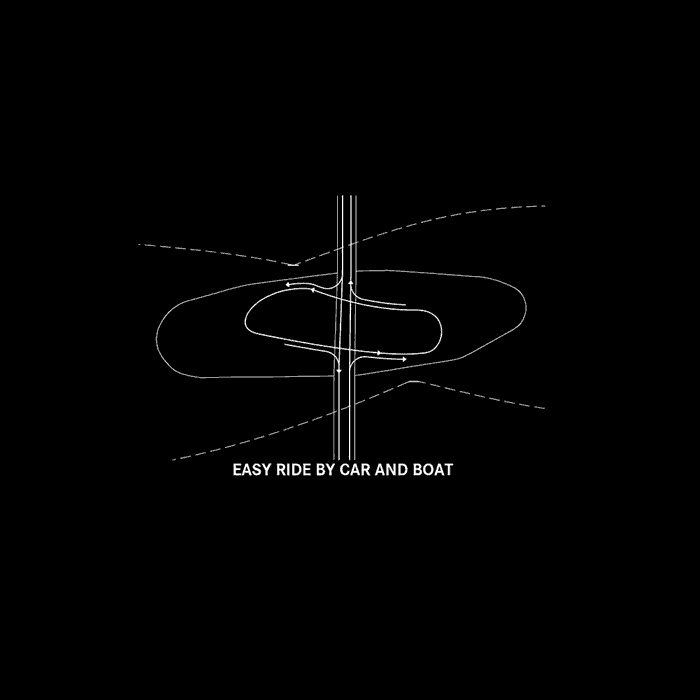Seoul
Performing Arts Centre
Culture
Performing arts centre, concert and opera house
City Administration Seoul
GFA app. 25,000 m²
2005
Like many spectacles synonymous with cities, Nodeul Island aims to ingratiate itself with visitors and become a prominent feature of Seoul. Presently, Nodeul functions as a hub which connects the bridges that arch over the Han River and link Seoul’s river banks. The city of Seoul organized an architectural and urban planning competition in order to embed Nodeul within the urban framework and equip it with the appropriate use and design. Much like the Museum Island in Berlin and New York’s Central Park, Nodeul Island has the potential to make a significant contribution towards the identity of Seoul.
To weave Nodeul into the city’s fabric, Seoul’s urban grid is expanded to include the island. The new district’s identity and appearance are shaped by two main public buildings, the opera house and the concert hall. Additional public and educational utilities supplement the performing arts centre and serve to sharpen the island’s character. Its small scale connects the district to its neighbouring areas and also provides a contrast against the large-scale opera house and concert hall. These two uses are housed in separate buildings, facing each other in order to create spatial connection, while remaining embedded in their specific urban context. Furthermore, the two structures are set in a dense urban fabric, with luminous cladding that is widely visible and radiates throughout the city.
The roof of the opera house provides a panoramic view of the Gang Nam skyline, the concert hall on the Gang Book, and the Hangan River. These panoramas are deliberately staged and arranged to blur the boundary between stage and reality, aided by neighbouring building blocks that frame the visitors’ views of Seoul. Invoking the surreal feel of a movie sequence, these views enhance the perception of Seoul by providing a kaleidoscopic addition of images.
